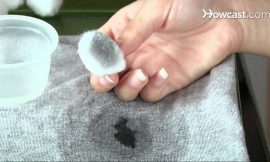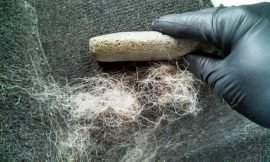
Did you know that over 60% of Americans are affected by allergies? Among the many culprits lurking in our environments, mold is one of the most common—and often overlooked. Just the thought of mold can send shivers down the spine, especially for allergy sufferers. Mold spores can wreak havoc on our respiratory systems, leading to chronic issues and discomfort. In this article, we'll dive into how mold impacts allergies and share practical strategies to prevent mold growth in your home. By the end, you’ll be equipped with the knowledge to protect yourself and your loved ones!
The Relationship Between Mold and Allergies
When we talk about allergies, mold spores are significant culprits that can trigger a range of allergic reactions. These tiny, airborne particles can often go unnoticed until they start causing issues. Different types of mold exist, each with varying effects on health, but most commonly, they can lead to respiratory problems and allergic responses. For instance, common molds like Cladosporium, Penicillium, and Aspergillus can induce symptoms ranging from mild irritation to serious health conditions.
If you're wondering about the specific conditions associated with mold exposure, asthma and rhinitis topped the list. Asthma can worsen for individuals who are sensitive to mold, leading to heightened symptoms such as wheezing, coughing, or shortness of breath. Similarly, rhinitis—which encompasses sneezing, runny nose, and nasal congestion—often flares up in environments where mold spores are present.
Signs and Symptoms of Mold Allergies
Recognizing the signs of mold allergies can be crucial for your health. Common symptoms include sneezing, itchy eyes, and skin rashes. However, there are also often-overlooked signs, such as chronic sinus issues or fatigue, which might indicate a mold allergy.
To differentiate between mold allergies and other allergies, consider the specific triggers and environments. For instance, if your symptoms worsen in damp areas or after rainfall, it may signal mold-related issues rather than pollen allergies.
Identifying Mold in Your Home
Identifying mold in your living space is the first step in tackling potential health issues. Common areas for mold growth indoors include bathrooms, basements, and around windows. These places tend to have higher humidity levels, making them prime spots for mold development.
For visually identifying mold, look for discolored patches, often green or black, and a musty smell can also be a significant indicator. However, hidden mold can be a more significant concern, which is why professional testing is essential. They can identify mold that grows behind walls or underneath floors where you can't see it.
Effective Prevention Strategies
Preventing mold growth is often about controlling your indoor environment. Here are a few actionable tips to keep your humidity levels in check: use dehumidifiers, especially in damp areas, and aim to keep indoor humidity below 50%.
Ventilation plays a huge role too; proper airflow throughout your home can reduce the likelihood of mold formation. Open windows when possible and consider using exhaust fans in kitchens and bathrooms. Regular cleaning routines are essential as well—ensure you’re wiping down surfaces that collect moisture, and wash any textiles that can harbor mold.
Dealing with Mold Infestations
If you do find mold in your home, it’s important to know the steps to take. First, address moisture sources—fix leaks and improve ventilation to prevent further growth. For small infestations, there are DIY cleaning solutions, often involving water and detergent or a vinegar mixture. However, larger infestations may require professional remediation to ensure thorough removal.
Once mold has been removed, restoring your indoor spaces is next. This could include replacing any damaged materials, such as drywall or carpets, and ensuring that the affected areas are dried out properly to prevent recurrence.
Long-Term Health Implications of Mold Exposure
Chronic health issues can arise from prolonged mold exposure, including respiratory diseases and persistent allergies. For individuals with existing allergies or asthma, mold can exacerbate these conditions, leading to an increased need for medication and professional medical care.
Monitoring your health after any mold exposure is vital. Keep track of symptoms, and consult a healthcare professional if you notice any significant changes. Your health should always be a priority, especially when navigating the hidden dangers of mold in your environment.
Conclusion
In summary, the impact of mold on allergies can be significant, but preventing mold growth in your home is entirely achievable! Taking proactive steps, such as controlling humidity and conducting regular checks, can safeguard your health and enhance your quality of life. Don't let mold dictate how you feel—start implementing our suggestions today and breathe easier! If you're experiencing severe symptoms, consider consulting with a healthcare professional for tailored advice.







